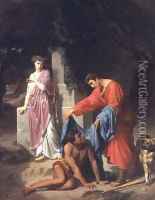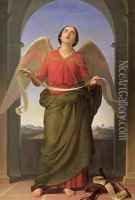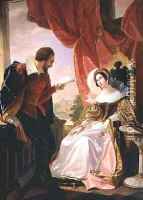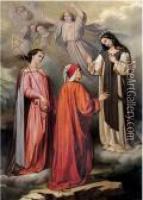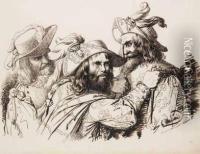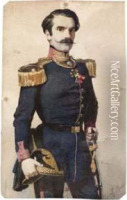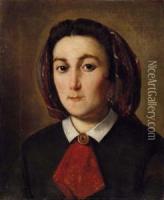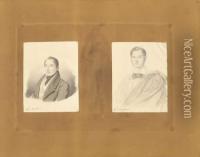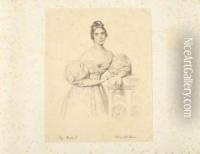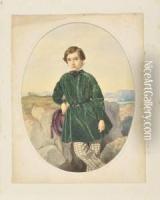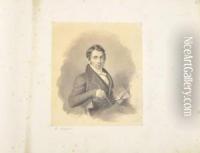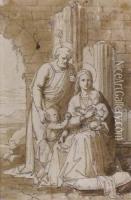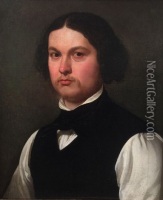Luigi Mussini Paintings
Luigi Mussini was an Italian painter and educator, born on May 19, 1813, in Berlin, Germany, into a family deeply involved in the arts. His father, Cesare Mussini, was also a painter, providing Luigi with an early exposure to the artistic world. Growing up in a culturally rich environment, Luigi developed a keen interest in art and pursued his education in this field with great enthusiasm. He studied at the Accademia di Belle Arti in Florence, where he was profoundly influenced by the Neoclassical movement, which was prevalent during his formative years.
Mussini's artistic career was marked by his commitment to the principles of Neoclassicism, emphasizing clarity, order, and beauty derived from the classical art of Greece and Rome. He was known for his historical paintings, portraits, and frescoes, which often reflected his deep knowledge of classical literature and mythology. Mussini's works are characterized by their meticulous attention to detail, harmonious compositions, and a delicate use of color.
In addition to his contributions as an artist, Luigi Mussini played a significant role in the field of art education. In 1843, he was appointed as a professor at the Accademia di Belle Arti in Siena, a position he held for many years. During his tenure, he was instrumental in modernizing the curriculum, incorporating more rigorous training in drawing and painting, and emphasizing the study of anatomy and perspective. Mussini was a beloved teacher, known for his dedication to his students and his ability to inspire them with his passion for art.
Mussini was also a key figure in the artistic community of his time, engaging with contemporary debates about art and contributing to the discourse on the role of tradition and innovation in the creative process. He was an advocate for the importance of academic training for artists, arguing that a thorough understanding of the principles of art was essential for innovation and creativity.
Luigi Mussini's legacy is not only found in his own artworks, which continue to be admired for their beauty and precision but also in the generations of artists he taught and influenced. His commitment to the ideals of Neoclassicism and his contributions to art education have left a lasting mark on the Italian art world. Mussini passed away on June 19, 1888, in Siena, Italy, leaving behind a body of work that remains a testament to his skills as an artist and educator.
